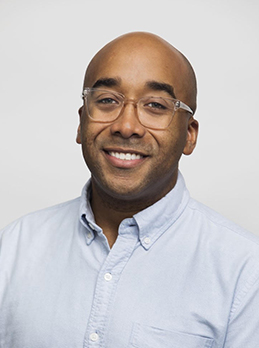
Day 1: Monday, November 25; 1 p.m.– 5:30 p.m.
Keynote speaker: Marcus Collins
2-3:15 p.m.; Mendelssohn Theatre

Marcus Collins: Lecturer of Marketing, Co-Director of the Yaffe Digital Media Initiative, Ross School of Business
Marcus Collins is a culturally curious thinker with an academic insight into the cognitive drivers that impact consumer behavior. He serves as the Chief Consumer Connections Officer at Doner Advertising, a full-serve advertising agency, and is a recipient of Advertising Age's 40 Under 40 (2016) and Crain's Business Detroit's 40 Under 40 (2016).
Marcus is an extremely passionate educator. He teaches at the Ross School of Business, University of Michigan, as a Teaching Excellence Award Winning and Golden Apple Award nominated professor of marketing. He lectures around the globe and speaks across stages far and wide, from Cannes Lions International Festival for Creativity to C2 Montreal, SXSW, Social Media Week, Adcolor, Hyper Island, TEDx, and Talks at Google.
Marcus is a doctoral candidate at Temple University and holds an MBA with an emphasis on Strategic Brand Marketing from the University of Michigan, where he also earned his undergraduate degree in Material Science Engineering. He is a proud Detroit native, a devoted husband, and loving father. Find more information on Marcus’ website: www.marctothec.com.
